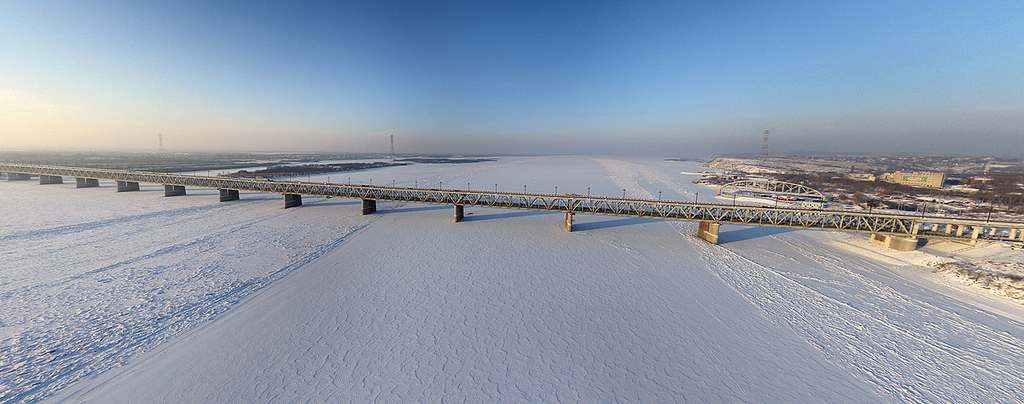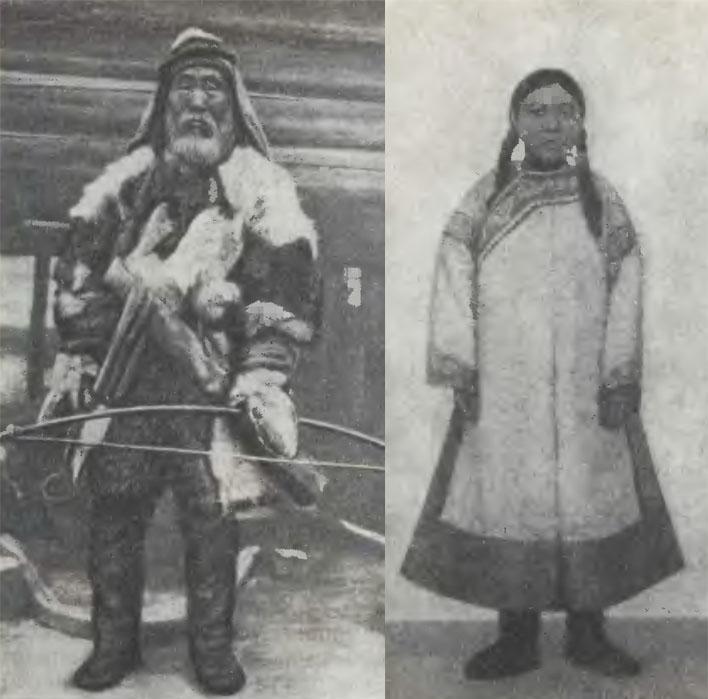|
Nurgan Regional Military Commission
The Nurgan Regional Military Commission () was a Chinese administrative seat established in Manchuria during the Ming dynasty, located on the banks of the Amur River, about 100 km from the sea, at Nurgan city (modern Tyr, Russia). Nurgan ( ) in the Jurchen language means “painting”. History The seat was nominally established in 1409, but was abandoned in 1435. Nurgan was the site of Yongning Temple (永寧寺), a Buddhist temple dedicated to Guanyin, that was founded by Yishiha (Išiqa) in 1413. The founding of Yongning Temple is recorded in the Yongning Temple Stele with inscriptions in Chinese, Mongolian and Jurchen scripts. The commission was an important institution during the Ming rule of Manchuria, obtaining at least the nominal allegiance of the lower Amur's tribes to the Ming government.L. Carrington Godrich, Chaoying Fang (editors), "Dictionary of Ming Biography, 1368–1644". Volume I (A-L). Columbia University Press, 1976. By 1409, the Yongle Emperor's ... [...More Info...] [...Related Items...] OR: [Wikipedia] [Google] [Baidu] |
Jurchen Language
Jurchen language ( zh, t=女真語, p=Nǚzhēn yǔ) was the Tungusic language of the Jurchen people of eastern Manchuria, the rulers of the Jin dynasty in northern China of the 12th and 13th centuries. It is ancestral to the Manchu language. In 1635 Hong Taiji renamed the Jurchen ethnicity and language to "Manchu". Writing A writing system for Jurchen language was developed in 1119 by Wanyan Xiyin. A number of books were translated into Jurchen, but none have survived, even in fragments. Surviving samples of Jurchen writing are quite scarce. One of the most important extant texts in Jurchen is the inscription on the back of "the Jin Victory Memorial Stele" ( zh, t=大金得勝陀頌碑, p=Dà jīn déshèngtuó sòngbēi, labels=no), which was erected in 1185, during the reign of Emperor Shizong. It is apparently an abbreviated translation of the Chinese text on the front of the stele.Hoyt Cleveland Tillman, Stephen H. West, ''China Under Jurchen Rule: Essays on Chin In ... [...More Info...] [...Related Items...] OR: [Wikipedia] [Google] [Baidu] |
Aigun
Aigun (; Manchu: ''aihūn hoton''; ) was a historic Chinese town in northern Manchuria, situated on the right bank of the Amur River, some south (downstream) from the central urban area of Heihe (which is across the Amur from the mouth of the Zeya River and Blagoveschensk).Aihui Town on Google Maps The Chinese name of the town, which literally means "Bright Jade", is a transliteration of the Manchu (or Ducher) name of the town. Today the former city of Aigun is called Aihui Town and is part of ... [...More Info...] [...Related Items...] OR: [Wikipedia] [Google] [Baidu] |
Khabarovsk Krai
Khabarovsk Krai ( rus, Хабаровский край, r=Khabarovsky kray, p=xɐˈbarəfskʲɪj kraj) is a federal subject (a krai) of Russia. It is geographically located in the Russian Far East and is a part of the Far Eastern Federal District. The administrative centre of the krai is the city of Khabarovsk, which is home to roughly half of the krai's population and the largest city in the Russian Far East (just ahead of Vladivostok). Khabarovsk Krai is the fourth-largest federal subject by area, and has a population of 1,343,869 as of 2010. The southern region lies mostly in the basin of the lower Amur River, with the mouth of the river located at Nikolaevsk-on-Amur draining into the Strait of Tartary, which separates Khabarovsk Krai from the island of Sakhalin. The north occupies a vast mountainous area along the coastline of the Sea of Okhotsk, a marginal sea of the Pacific Ocean. Khabarovsk Krai is bordered by Magadan Oblast to the north, Amur Oblast, Jewi ... [...More Info...] [...Related Items...] OR: [Wikipedia] [Google] [Baidu] |
Military History Of Manchuria
A military, also known collectively as armed forces, is a heavily armed, highly organized force primarily intended for warfare. It is typically authorized and maintained by a sovereign state, with its members identifiable by their distinct military uniform. It may consist of one or more military branches such as an army, navy, air force, space force, marines, or coast guard. The main task of the military is usually defined as defence of the state and its interests against external armed threats. In broad usage, the terms ''armed forces'' and ''military'' are often treated as synonymous, although in technical usage a distinction is sometimes made in which a country's armed forces may include both its military and other paramilitary forces. There are various forms of irregular military forces, not belonging to a recognized state; though they share many attributes with regular military forces, they are less often referred to as simply ''military''. A nation's mili ... [...More Info...] [...Related Items...] OR: [Wikipedia] [Google] [Baidu] |
Military History Of The Ming Dynasty
A military, also known collectively as armed forces, is a heavily armed, highly organized force primarily intended for warfare. It is typically authorized and maintained by a sovereign state, with its members identifiable by their distinct military uniform. It may consist of one or more military branches such as an army, navy, air force, space force, marines, or coast guard. The main task of the military is usually defined as defence of the state and its interests against external armed threats. In broad usage, the terms ''armed forces'' and ''military'' are often treated as synonymous, although in technical usage a distinction is sometimes made in which a country's armed forces may include both its military and other paramilitary forces. There are various forms of irregular military forces, not belonging to a recognized state; though they share many attributes with regular military forces, they are less often referred to as simply ''military''. A nation's military ma ... [...More Info...] [...Related Items...] OR: [Wikipedia] [Google] [Baidu] |
Nanai People
The Nanai people are a Tungusic people of East Asia who have traditionally lived along Heilongjiang (Amur), Songhuajiang (Sunggari) and Wusuli River on the Middle Amur Basin. The ancestors of the Nanai were the Jurchens of northernmost Manchuria ( Outer Manchuria). The Nanai/Hezhe language belongs to the Manchu-Tungusic languages. According to the 2010 census there were 12,003 Nanai in Russia. Name Common names for these people include нанай/Nanai (meaning 'natives, locals, people of the land/earth'); self-designation Hezhen (means 'people of the Orient'); russian: нанайцы ; ; . There are also terms formerly in use: Goldi, Golds, Goldes, Heje, and Samagir. Own names are ( and ) and (). means 'land, earth, ground, country' or, in this context, 'native, local' and , , means 'people' in different dialects. The Russian linguist L. I. Sem gives the self-name in the Cyrillic form, ''хэǯэ най'' (''Hezhe nai'') or ''хэǯэны'' (''Hezheni''), ... [...More Info...] [...Related Items...] OR: [Wikipedia] [Google] [Baidu] |
Ulch People
The Ulch people, also known as Ulch or Ulchi, (russian: ульчи, obsolete ольчи; Ulch: , nani) are an indigenous people of the Russian Far East, who speak a Tungusic language known as Ulch. Over 90% of Ulchis live in Ulchsky District of Khabarovsk Krai, Russia. According to the 2002 Census, there were 2,913 Ulchs living in Russia — down from 3,173 recorded in the 1989 Census, but up from 2,494 recorded in the 1979 Census, and 2,410 recorded in the 1970 Census. According to the 2010 Census there were 2,765 Ulchs in Russia. History The Ulch people descend from the autochthonous Paleolithic population of coastal Northeast Asia and were found to be very similar to ancient samples found in this region from about 8000 years ago. The Ulch people are often classified as one of the ancient Paleosiberian peoples, which is however not an ethno-linguistic group but a term applied to various ethnic groups of Siberia which do not belong to the bigger Northeast Asian po ... [...More Info...] [...Related Items...] OR: [Wikipedia] [Google] [Baidu] |
Udeghe People
Udege (russian: Удэгейцы; ude, удиэ or , or Udihe, Udekhe, and Udeghe correspondingly) are a native people of the Primorsky Krai and Khabarovsk Krai regions in Russia. They live along the tributaries of the Ussuri, Amur, Khungari, and Anyuy Rivers. The Udege speak the Udege language, which belongs to the Tungusic language family. Their religious beliefs include animism, animal worship, and shamanism. The Udege are mainly engaged in hunting, fishing, and ginseng harvesting. According to the 2002 census, there were 1,657 Udege in Russia, a slight increase from 1,500 in 1970. This was down to 1,496 Udege in Russia in the 2010 census. They are one of the closest ethnic groups to the Manchu and Nanai, and are possibly of Xi Yeren Jurchen origin. The largest settlements of Udege are in: * Khabarovsk krai: Gvasiugi (Imeni Lazo District) and Arsenievo (Nanaysky District) * Primorsky kra: Agzu (Terneysky District), Krasny Yar and Olon (Pozharsky District) Since the ... [...More Info...] [...Related Items...] OR: [Wikipedia] [Google] [Baidu] |
Chinese New Year
Chinese New Year is the festival that celebrates the beginning of a new year on the traditional lunisolar and solar Chinese calendar. In Chinese and other East Asian cultures, the festival is commonly referred to as the Spring Festival () as the spring season in the lunisolar calendar traditionally starts with lichun, the first of the twenty-four solar terms which the festival celebrates around the time of the Chinese New Year. Marking the end of winter and the beginning of the spring season, observances traditionally take place from New Year’s Eve, the evening preceding the first day of the year to the Lantern Festival, held on the 15th day of the year. The first day of Chinese New Year begins on the new moon that appears between 21 January and 20 February. Chinese New Year is one of the most important holidays in Chinese culture, and has strongly influenced Lunar New Year celebrations of its 56 ethnic groups, such as the Losar of Tibet (), and of China's neighbours, ... [...More Info...] [...Related Items...] OR: [Wikipedia] [Google] [Baidu] |
Primorsky Krai
Primorsky Krai (russian: Приморский край, r=Primorsky kray, p=prʲɪˈmorskʲɪj kraj), informally known as Primorye (, ), is a federal subject (a krai) of Russia, located in the Far East region of the country and is a part of the Far Eastern Federal District. The city of Vladivostok is the administrative center of the krai, and the second largest city in the Russian Far East, after Khabarovsk. The krai has the largest economy among the federal subjects in the Russian Far East, and a population of 1,956,497 as of the 2010 Census. The krai shares Russia's only border with North Korea, along the Tumen River in Khasansky District in the southwestern corner of the krai. Peter the Great Gulf, the largest gulf in the Sea of Japan, is located along the south coast. Historically part of Manchuria, Primorsky Krai was ceded to the Russian Empire by Qing China in 1860 as part of a region known as Outer Manchuria, forming most of the territory of Primorskay ... [...More Info...] [...Related Items...] OR: [Wikipedia] [Google] [Baidu] |
Marten
A marten is a weasel-like mammal in the genus ''Martes'' within the subfamily Guloninae, in the family Mustelidae. They have bushy tails and large paws with partially retractile claws. The fur varies from yellowish to dark brown, depending on the species; it is valued by animal trappers for the fur trade. Martens are slender, agile animals, adapted to living in the taiga, which inhabit coniferous and northern deciduous forests across the Northern Hemisphere. Classification Results of DNA research indicate that the genus ''Martes'' is paraphyletic, with some studies placing ''Martes americana'' outside the genus and allying it with '' Eira'' and '' Gulo'', to form a new New World clade. The genus first evolved up to seven million years ago during the Miocene epoch. Fossils Several fossil martens have been described, including: *†''Martes campestris'' (Pliocene) *†''Martes wenzensis'' (Pliocene) *†''Martes vetus'' (Pleistocene) Another described fossil species, ''Ma ... [...More Info...] [...Related Items...] OR: [Wikipedia] [Google] [Baidu] |
Uilta
Oroks (''Ороки'' in Russian; self-designation: ''Ulta, Ulcha''), sometimes called Uilta, are a people in the Sakhalin Oblast (mainly the eastern part of the island) in Russia. The Orok language belongs to the Southern group of the Tungusic language family. According to the 2002 Russian census, there were 346 Oroks living in Northern Sakhalin by the Okhotsk Sea and Southern Sakhalin in the district by the city of Poronaysk. According to the 2010 census there were 295 Oroks in Russia. Etymology The name Orok is believed to derive from the exonym ''Oro'' given by a Tungusic group meaning "a domestic reindeer". The Orok self-designation endonym is ''Ul'ta'', probably from the root ''Ula'' (meaning "domestic reindeer" in Orok). Another self-designation is ''Nani''. Occasionally, the Oroks, as well as the Orochs and Udege, are erroneously called Orochons. The Uilta Association in Japan claims that the term Orok has a derogatory connotation. Population and settlement The tota ... [...More Info...] [...Related Items...] OR: [Wikipedia] [Google] [Baidu] |

.jpg)


_family.jpg)


